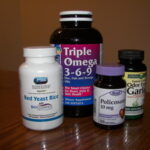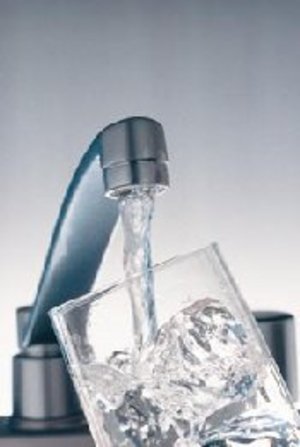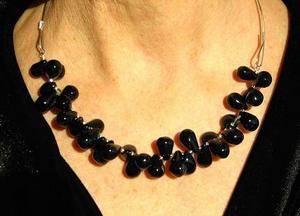For those whose cholesterol levels top the 200 mark, physicians often prescribe statins. While effective for many people with high levels of LDL, or bad cholesterol, a number of patients have suffered from side effects, the most notable being muscle toxicity or severe muscle pain.
The pharmaceutical family of statins includes such well-known names as Lipitor and Zocor. These drugs work by blocking the process that produces cholesterol. The core ingredient is lovastatin, a byproduct of yeast.
Red Yeast Rice is rice that has been fermented by the red yeast known as Monascus purpureus. Red Yeast Rice has been a part of Asian cultures since at least the 9th century. It is thought to promote blood circulation and digestive health.
In 1977, Dr. Endo of Japan discovered a naturally occurring substance in Monascus yeast. Dr. Endo called this substance moncacolin K. Moncacolin K is a lovastatin, the same ingredient used in prescription statin drugs manufactured by pharmaceutical companies.
It is lovastatin that lowers cholesterol.
Red Yeast Rice capsules were available over the counter, and cost considerably less than prescription statins. Like their prescription counterparts, the supplements contained lovastatin. The ability to lower cholesterol became a marketing tool, and Red Yeast Rice was touted as a natural way to bring down cholesterol levels.
If sold as a dietary supplement, Red Yeast Rice goes unregulated by the Food and Drug Administration (FDA). But in 1999, when the FDA was alerted that the Red Yeast Rice products being sold over the counter contained lovastatin, the governmental agency sought to regulate it.
Lovastatin is a regulated substance, and so any product containing the substance needs to be regulated by the FDA.
In 2000, the 10th US Circuit Court of Appeals ruled that Red Yeast Rice was to be regulated, and the FDA began investigating.
The FDA focused on three major brands. Two of these are Red Yeast Rice and Red Yeast Rice/Policosanol Complex. These were sold by Swanson Health Products Inc. and manufactured by Nature’s Value Inc. and Kabco Inc. Cholestrix is the third product and was sold by Sunburst Biorganics.
But in August of 2007, the FDA issued a press release warning against the use of these products because they contained lovastatin. The press release states, in part, “These red yeast rice products are a threat to health because the possibility exists that lovastatin can cause severe muscle problems leading to kidney impairment. This risk is greater in patients who take higher doses of lovastatin or who take lovastatin and other medicines that increase the risk of muscle adverse reactions.” (http://www.fda.gov/bbs/topics/NEWS/2007/NEW01678.html)
The FDA claims these Red Yeast Rice products are a threat to health because they contain lovastatin, the same active ingredient found in pharmaceutical statins. Why is Red Yeast Rice a threat, but prescription statins are not, and are still being sold as the primary treatment for lowering cholesterol?
On the face of things, it appears that the pharmaceutical companies feared their profits would be reduced if a mere over the counter supplement could do the same job as their high priced prescription drugs, and leaned on the FDA. And if you considered using Red Yeast Rice because you were told it doesn’t have the same side effects, that it’s a natural way to lower cholesterol, you may tend to agree with that assessment.
The FDA’s claims that lovastatin may cause severe muscle problems is correct, and the pharmaceutical companies include this information in their product packaging. So why is it okay for the pharmaceutical companies to market products with lovastatin but Swanson Health Products Inc. or Sunburst Biorganics are prohibited from doing so?
The problem lies in dosage. Unlike prescription statins, the dosages of lovastatin in Red Yeast Rice products vary from batch to batch, and some of those batches can contain a higher quantity of lovastatin that could prove harmful under the right circumstances. So the brands of Red Yeast Rice mentioned above are no longer available, due to their high lovastatin content.
Red Yeast Rice under other brand names, such as Nature’s Bounty, is quickly vanishing from the shelves of health food stores and other outlets. Though still available on the Internet (what isn’t?), caution should be used. If you had a negative reaction to prescription statin drugs, you most likely will experience the same reactions using Red Yeast Rice.
You experienced a negative reaction from the prescription drugs due to the lovastatin. Red Yeast Rice will cause the same side effects, but they may not be as severe. Or they may be worse.
Red Yeast Rice, stripped of lovastatin, has no affect on your cholesterol levels, and so can not be considered an alternative to statins.
If you’re unable to take statins, and hoped Red Yeast Rice was the answer, do not despair. There are alternatives. Start with your lifestyle choices. Exercise and a healthy diet are two important elements in controlling your cholesterol levels. They may not be as easy as popping a capsule or two into your mouth, but the side effects are ones you can live with.




